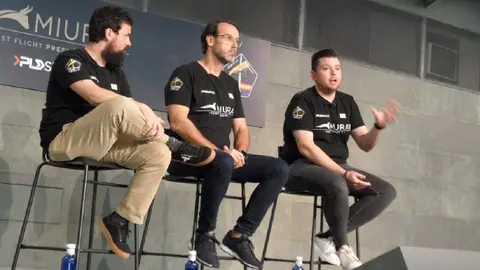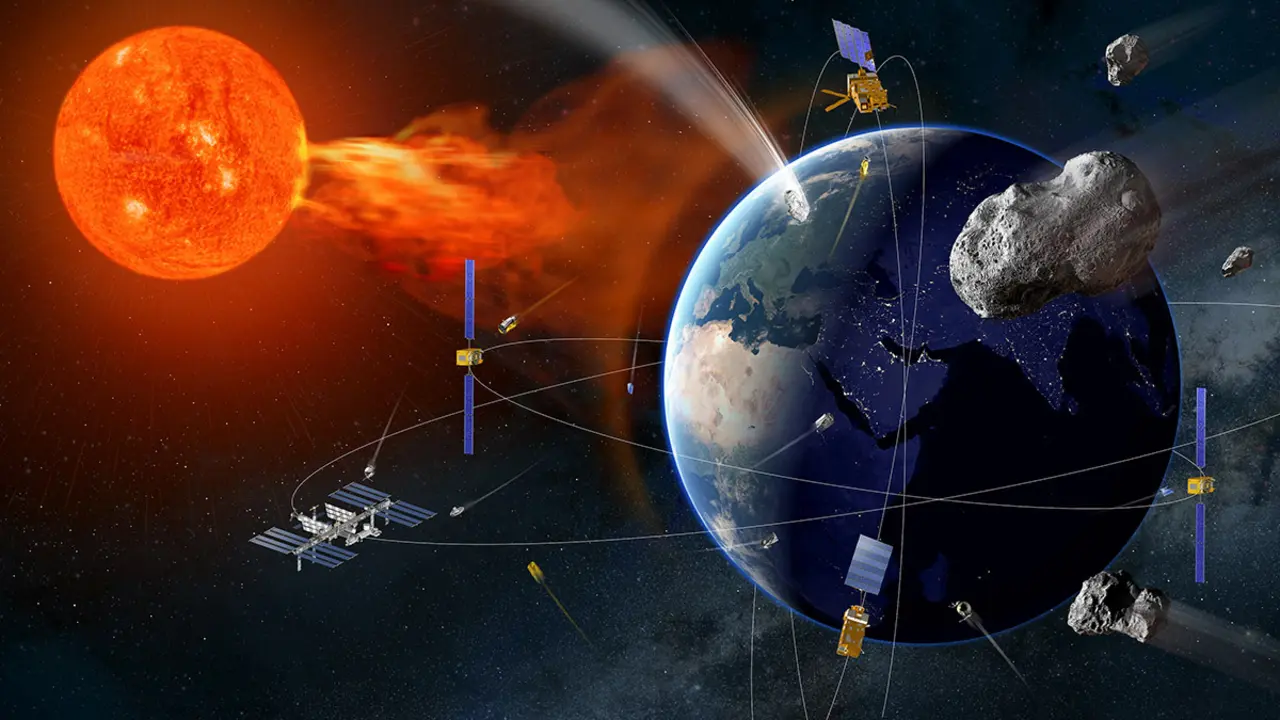These are the German, French and British competitors of Spanish startup PLD

More than four million people have had the opportunity to watch a full-scale model of the Miura 1 suborbital launcher developed by the Spanish company PLD Space on Antena 3 Television.
They were also able to see the large size of the upper part of its big brother, the Miura 5, designed to place satellites in Earth orbit. It was on Tuesday, 21 November, during the broadcast of the programme "El Hormiguero" hosted by Pablo Motos.
Hundreds of thousands of other Spaniards had been thrilled on 7 October when they witnessed live the impressive take-off of the first rocket manufactured entirely in Spain. Its satisfied protagonists are the managers and employees of PLD, a private company based in Elche, Alicante, and made up of an enthusiastic team of engineers and technicians full of enthusiasm and desire to do their job well.

After the successful flight of the Miura 1, its president Ezequiel Sanchez, the founders of PLD, Raúl Torres and Raúl Verdú, and their senior staff have decided that a second validation flight is appropriate. Still without a scheduled date, with this new launch they intend to demonstrate the viability of the Miura 1, which is the technological basis for making the Miura 5 a reality, which aspires to become Europe's first commercial rocket and make PLD "the most influential technology company in Europe in the space sector", Ezequiel Sanchez hopes.
But there have been companies in the European Union for years that are closely following in the footsteps of the entrepreneurs from Elche. Similar projects are underway in Germany, Denmark, France, Italy, Norway, the Netherlands, Poland and the United Kingdom. They are start-ups, i.e. emerging companies with an innovative business philosophy and technology, competing for private funding to develop small launchers. Their eyes are on Brussels and the European Space Agency (ESA), who must decide who deserves to win, receive their stamp and their millions.

The car manufacturer Porsche is one of the investors
Among almost twenty start-ups, five have launched projects that are particularly noteworthy and enjoy special protection from their respective space agencies. They are the British company Orbital Express Launch (Orbex), the French company Maiaspace and three German companies: HyImpulse Technologies Gamba, Isar Aerospace Technologies GmbH and Rocket Factory Augsburg AG, known in the industry by its acronym RFA.
Coincidentally, all three German companies are located in important industrial clusters near Munich, the capital of Bavaria, are supported by the federal government and are backed by a large group of private investors. This is the case of Isar, which has received injections of funds worth around 300 million euros. One of its 12 shareholders is the carmaker Porsche, although it has also received EU grants worth €10m.
Founded in 2018 and headquartered in Ottobrunn, about 15 kilometres from Munich, the micro launcher Isar has developed is called Spectrum, has two propulsion stages - liquid oxygen and propane Aquila engine - and the capacity to place satellites of up to 1 tonne into low-Earth orbit. Liftoff is planned for "the second half of this year", according to the company, which has not yet provided a date.

The first Spectrum will carry seven tiny satellites, which aim to validate communications technologies and weather data. The payloads have been provided by five German universities and institutions, including the German Aerospace Agency (DLR), the Berlin Institute for Aerospace Engineering and the Würzburg Telematics Centre. Also the Norwegian University of Science and Technology in Trondheim and the Institute of Electronics and Telecommunications at the University of Maribor in Slovenia.
The maiden flight will take place from a pad that Isar has paid for at Norway's newly modernised Andøya space base, with which the German company signed an agreement in April 2021 to launch from there for 20 years on an exclusive basis. It has also received approval from the French space agency to launch from French Guiana.

RFA's 30-metre giant dwarf
A second German startup competing for PLD's primacy is RFA, whose headquarters are in Augsburg, some 55 kilometres northwest of Munich. It is the launch services company sponsored by OHB, the big German satellite manufacturer, whose largest shareholder - 69.72 per cent - is the Fuchs family headed by 61-year-old Marco Fuchs.
RFA has developed the 30-metre-high RFA One rocket with three propulsion stages equipped with Helix rocket engines, which has been tested at the Swedish space base in Kiruna, reopened in January by King Carl Gustaf and European Commission President Ursula von der Leyen. RFA One will be able to carry a payload of 850 kilos into polar orbit at 2,000 kilometres.

For its first flight, five German and two Italian scientific institutions are providing payloads with a take-off weight of 136 kg. And for the second launch of RFA One on 23 November, eight satellites weighing 200 kilos have been selected. They belong to five institutions in Germany, one in Bulgaria, one in Poland and one in Spain, the Polytechnic University of Catalonia, which is providing the 3Cat-8 nano-satellite.
The third private German company is HyImpulse, based in the small town of Neuenstadt am Kocher, but with its design offices in Ottobrunn. Established in 2018 and a subsidiary of DLR, its project is the SL-1 three-stage hybrid propellant rocket, designed to put up to 500 kilos into space. Following PLD's approach with the Miura 1 and Miura 5, HyImpulse is also working on the SR-75 suborbital rocket, which will serve as a technology demonstrator and will fly in March 2024 from the Koonibba test centre in Australia.

The French company Maiaspace is in a privileged position. It is a wholly owned subsidiary of ArianeGroup, the Ariane 6 prime contractor, which is equally owned by Airbus Defence and Space France and the French engine manufacturer Safran. Established in 2021 with the encouragement of President Macron, Maia has two propulsion stages with the ESA-funded Prometheus methane engine and builds on work carried out on the partially reusable Themis rocket. On its maiden flight scheduled for 2025, it should carry a payload of around 500 kilos into orbit.
Among the UK initiatives, the most prominent is Orbex, a company set up in May 2015 that has received more than £100 million in private funding from ESA and the UK space agency. Owned by the UK and Portuguese subsidiaries of Spain's Deimos Space, its Prime reusable orbital launcher has a height of 19 metres, two propulsion stages with liquid oxygen and LPG engines to position up to 200 kilos in low orbit. Its maiden flight from the Sutherland Space Centre in northern Scotland is facing serious delays and will not take place until late 2024 or even 2025.












